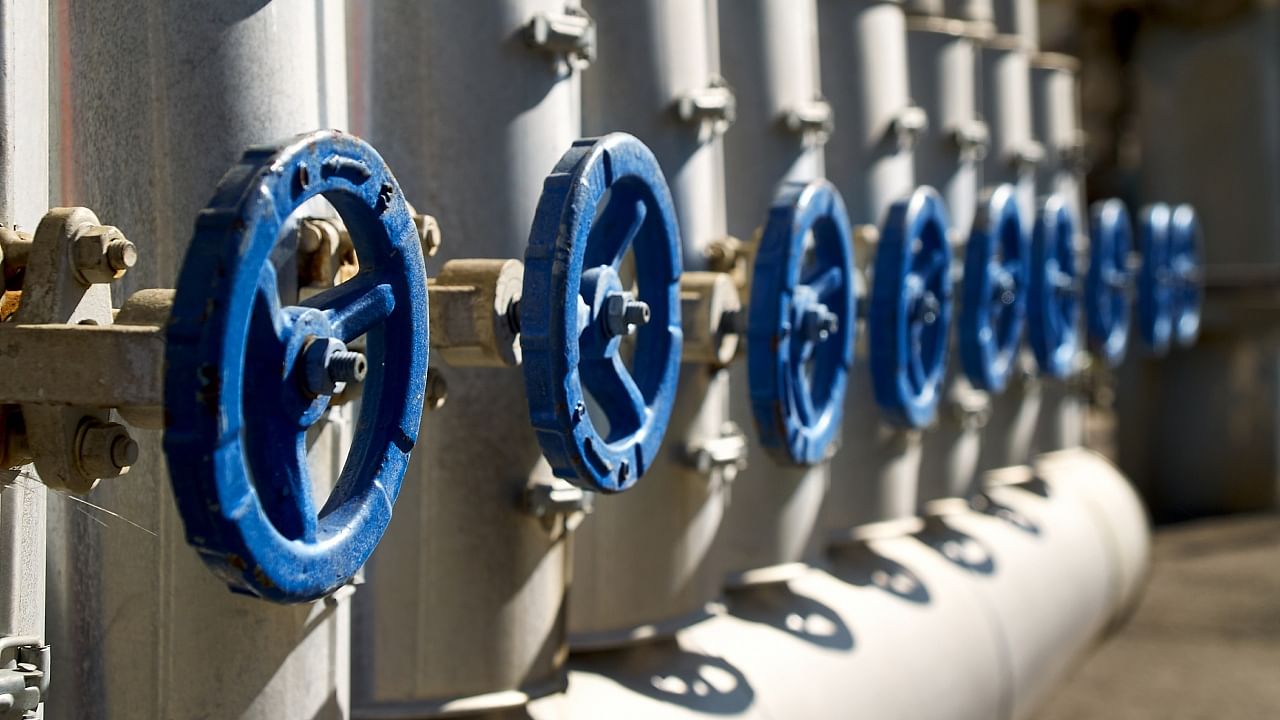
The government on Friday left the price of APM gas, used to make CNG and fertilisers, unchanged pending a Cabinet decision on capping rates, according to an official order.
While the price of natural gas from legacy or old fields was left unchanged at $8.57 per million British thermal units, the rate for the fuel from newer but difficult fields such as one operated by Reliance Industries and its partner bp in the KG basin was cut marginally to $12.12 per mmBtu.
With Russia's war in Ukraine pushing global energy prices to record levels, the government had last year constituted an expert committee to rework the basis on which rates are fixed in the country. That committee under Kirit Parikh had suggested shifting from using international gas as a benchmark to oil and capping the prices.
The committee's recommendations were, however, yet to get Cabinet approval, pending which the government has decided to continue with the existing rates till further orders, Oil Ministry's Petroleum Planning and Analysis Cell stated in an order, saying these rates are provisional.
The price for gas from difficult fields like deepwater was cut to $12.12 per mmBtu for six month period, beginning April 1 from the current $12.46, PPAC said.
The government bi-annually fixes prices of locally produced natural gas -- which is converted into CNG for use in automobiles, piped to household kitchens for cooking and used to generate electricity and make fertilisers.
Two different formulas govern rates paid for gas produced from legacy or old fields of national oil companies like Oil and Natural Gas Corporation (ONGC) and Oil India Ltd (OIL), and that for newer fields lying in difficult-to-tap areas, such as deepsea.
The global spurt in energy prices after Russia's invasion of Ukraine has led to rates of locally produced gas climbing to record levels – $8.57 per million British thermal unit for gas from legacy or old fields and $12.46 per mmBtu for gas from difficult fields.
These rates are due to revision on April 1. Going by the current formula, prices of gas from legacy fields are slated to climb to $10.7 per mmBtu.
Rates of CNG and piped gas for kitchens have already jumped 70 per cent because of the previous gas price hike and would climb further, if April 1 rate revision happens.
Sources said the government had last year constituted a committee under Kirit Parikh to look at revision in gas prices that balances both local consumer and producer interest, while at the same time advances the country's cause of becoming a gas-based economy.
The committee has recommended changing the indexation for gas from legacy fields to 10 per cent of the basket of crude oil that India imports instead of the current practice of using rates of gas in surplus nations to decide their price.
This, however, would be subject to a floor or base price of $4 per mmBtu and a cap or ceiling price of $6.50, they said.
At the current Brent crude oil price of $75 per barrel, the price of gas should be $7.5 per mmBtu but the fuel would be priced only at $6.5 due to the cap.
While leaving the formula for difficult fields unchanged, the panel suggested the price band for current production from legacy or old fields, which make up for two-thirds of all gas produced in the country and is currently under the administered price mechanism, or APM, until full deregulation of prices is implemented in 2027.
The panel suggested a 50 cents per mmBtu increase in the $6.50 ceiling every year to slowly move toward the marketing and pricing freedom for APM fields.
The sources said inter-ministerial consultations on the committee recommendations are over and a note for consideration of the Cabinet, largely accepting the recommendations, has been moved.
But the Cabinet approval for the pricing formula change couldn't come in time so the current rates will continue on an ad-hoc basis, they said, adding the Cabinet is likely to consider it soon.
The ceiling price covers the cost of production of producers while protecting consumers particularly CNG users, kitchens using piped cooking gas and fertiliser plants which had grappled with soaring input costs.
APM gas makes up most of CNG and kitchen gas supplies.
India aspires to become a gas-based economy with the share of natural gas in its primary energy mix targeted to rise to 15 per cent by 2030 from the existing level of around 6.3 per cent.
APM gas fields were allotted to ONGC and OIL before 1999. Production from these fields does not attract profit-sharing with the government, and their pricing formula is benchmarked to gas prices at international gas hubs in surplus nations every six months based on the weighted average price. Prices were last revised on October 1.
To incentivise additional production from a new well or well intervention in the nomination blocks, the Kirit Parikh committee recommended a premium of 20 per cent over and above the APM prices for ONGC and OIL till complete freedom.
As much as 34 per cent of APM gas is allotted to the power sector in 2021-22, 17 per cent to the fertiliser industry, which impacts food prices, and 22 per cent to the city gas sector.
The committee also recommended that gas should be brought under the Goods and Services Tax or GST regime. Having common taxation such as GST for gas in lieu of state-level VATs, which vary from 3 per cent to as high as 24 per cent, will help develop the market.